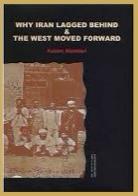Why isn’t Iran, a country that used to be one of the largest civilizations in the world, a country that occupies 628,000 square mile of land, a country large as England, France, Germany, Italy, Belgium, Netherlands and Denmark combined, a country that has a population of 65 million- compared to the aggregate population of the above countries, which is nearly 300 million- able to produce sufficient food to meet its own demands?
Geographical obstacles, which cannot be easily removed, are often offered to explain such a shortage. But the climate barrier-, which cannot be surmounted easily-, is considered only one of the causes of slow development in Iran. The greater cause of slow development and the existing gap between “underdevelopment” in Iran and development in the West, especially in the modern era, lies in economic, political, social, cultural and religious arenas, which unlike the climatic obstacle, can be overcome.
When the issue of achieving growth and development is raised, one cannot and must not confine it to economic or political arenas. One has to wonder, therefore, what is the secret behind the lasting suppressive measures in Iran, in its political, cultural, social and religious manifestations?
The characteristics of the economic history of Iran are examined in the pre-Islamic era, the era of the Islamic caliphate, and thereafter. The features of the economic history of the West are also examined in three eras: the ancient era, the medieval era, and the era after the emergence of contemporary civilization. The goal of this historical-comparative study is to understand the trends of growth in Eastern and Western civilizations, for they have resulted in different outcomes
What made contemporary Western civilization a possibility was the capitalist mode of production and what resulted in the capitalist mode of production was the feudalist relations in Europe. What made feudalism a possibility was the private ownership of the land. All three elements were absent in Iran
In Iran’s system, which was based on the Asiatic mode of production, there were no grounds for the emergence of industrial capitalism. Contemporary emergence of capitalism in Iran has been limited to commercial capitalism, which has no fundamental conflict with religious institutions, the absolute monarchy, nor the agrarian economy.
Contemporary development of the West was realized through the capitalist system. The order of the capitalist economy originated in the termination of the feudalist economy. During the era of feudalism, the West was underdeveloped, like the East. In other words, until the beginning of the sixteenth century, there was not much difference between the East and the West.
In short and from a general point of view, backwardness of Iran and development of the West are based on two crucial factors. These factors are 1) the emergence of capitalism and separation of state and the church in the West, and 2) absence of capitalist relations and the integration of state and religion in Iran.
The present, less developed situation in Iran is rooted deeply in the past. Therefore, to find any solution for the current problem, one has to trace its origins in the history of Iran. For example, reasons behind persistent cultural and religious obscurantism, the inability of scientific and rational trends to predominate in Iranian society, and the recent new attempts toward modern interpretation of religion, civil society and democracy can all be understood only through a historical perspective. If the less developed status is an undesirable one, and if Iran is to find a way to alter this situation, then what is the path toward advancement, if not modernization?
(From: Site of Author)





